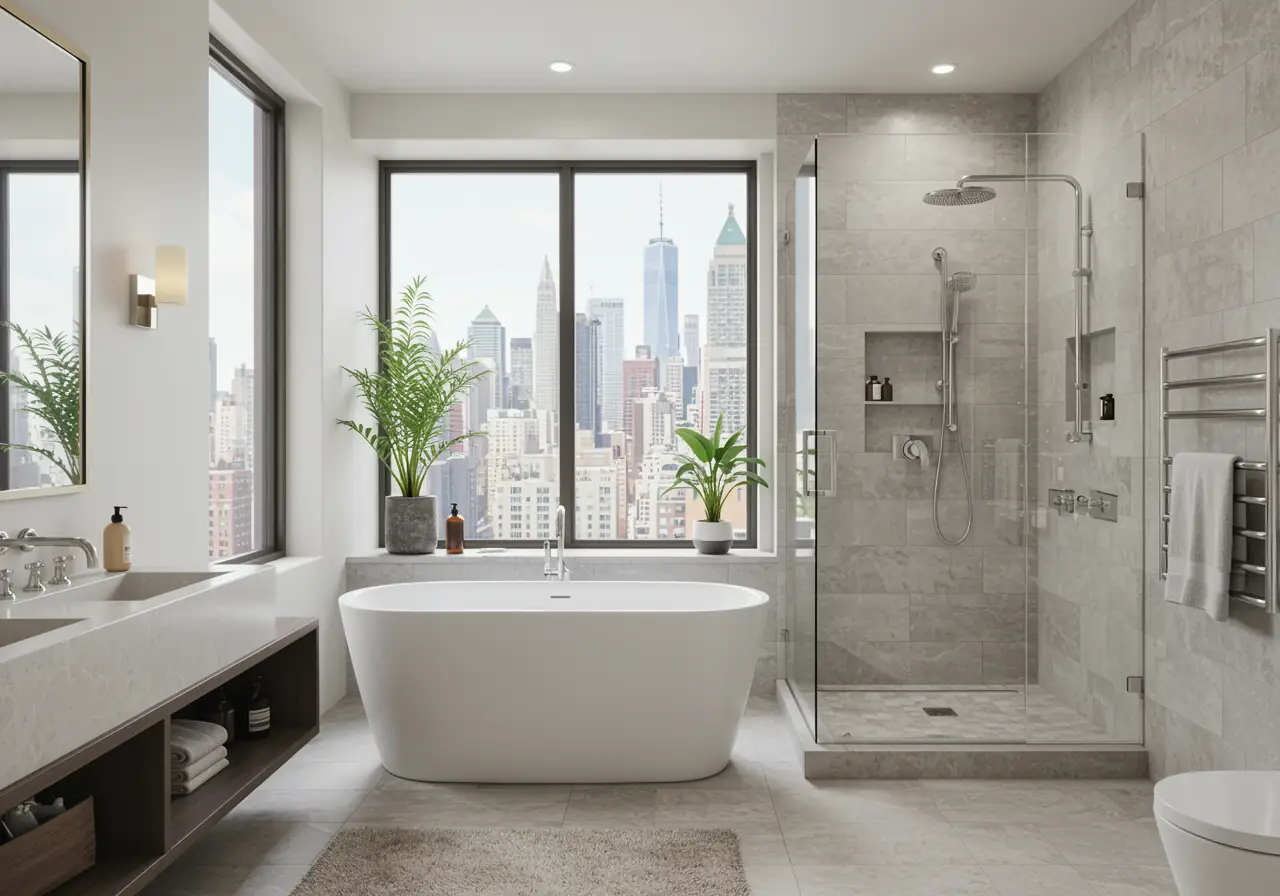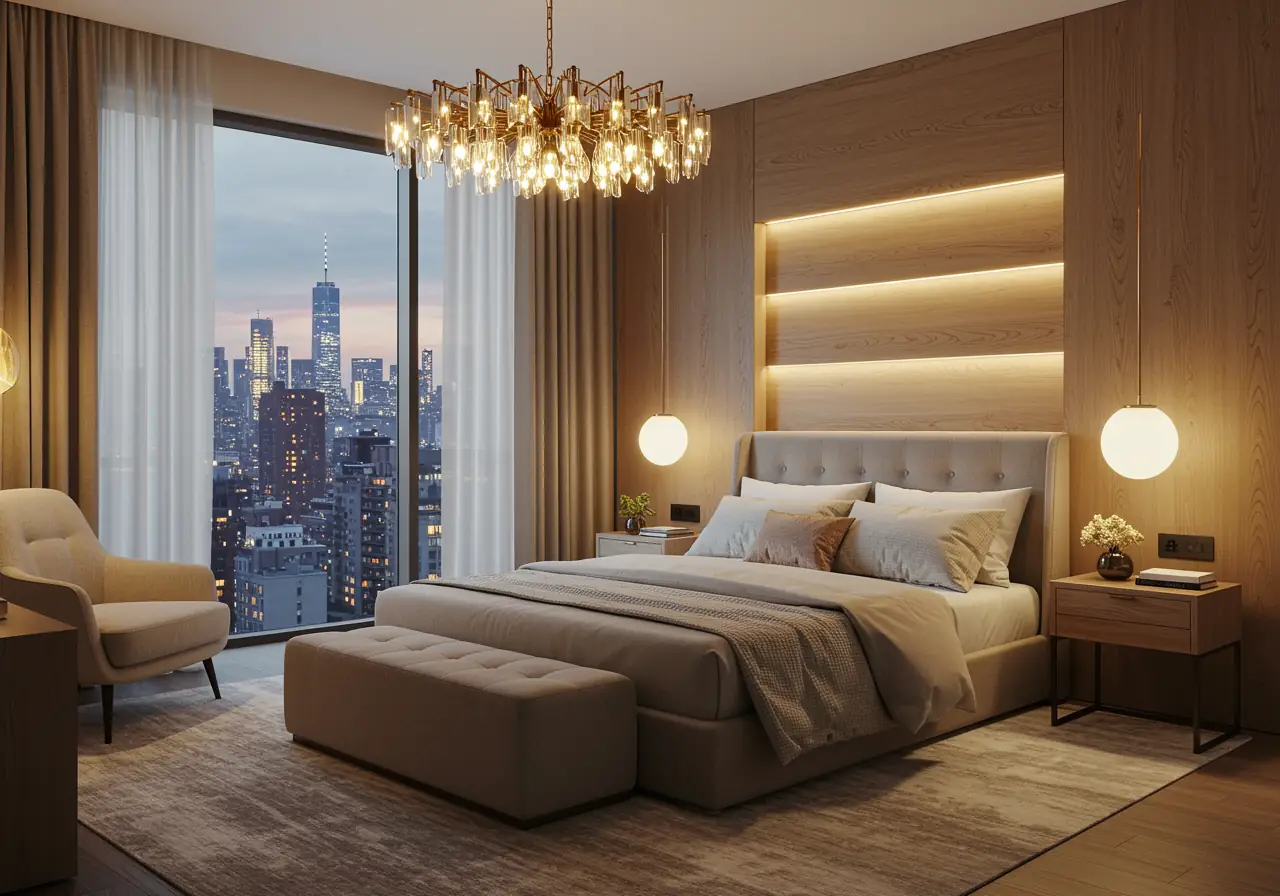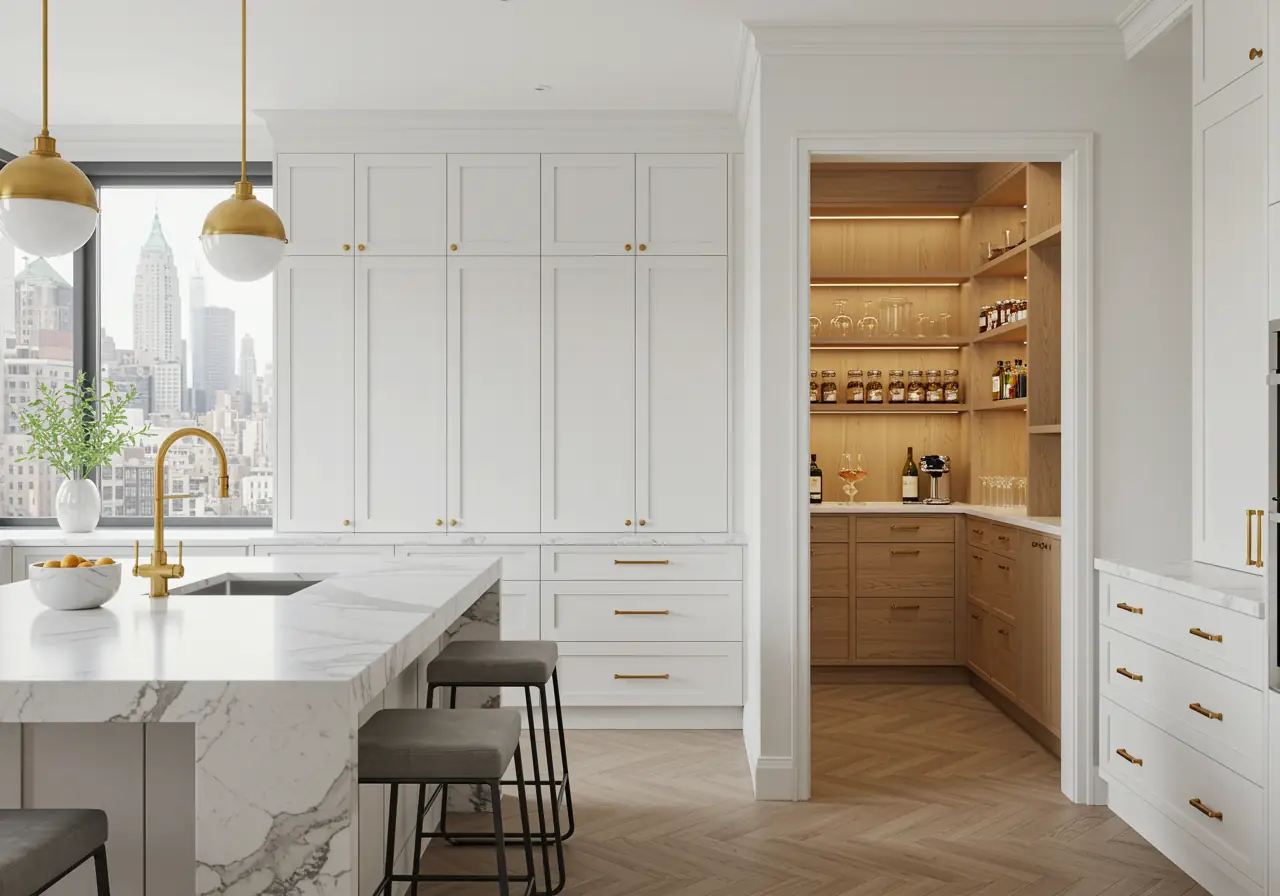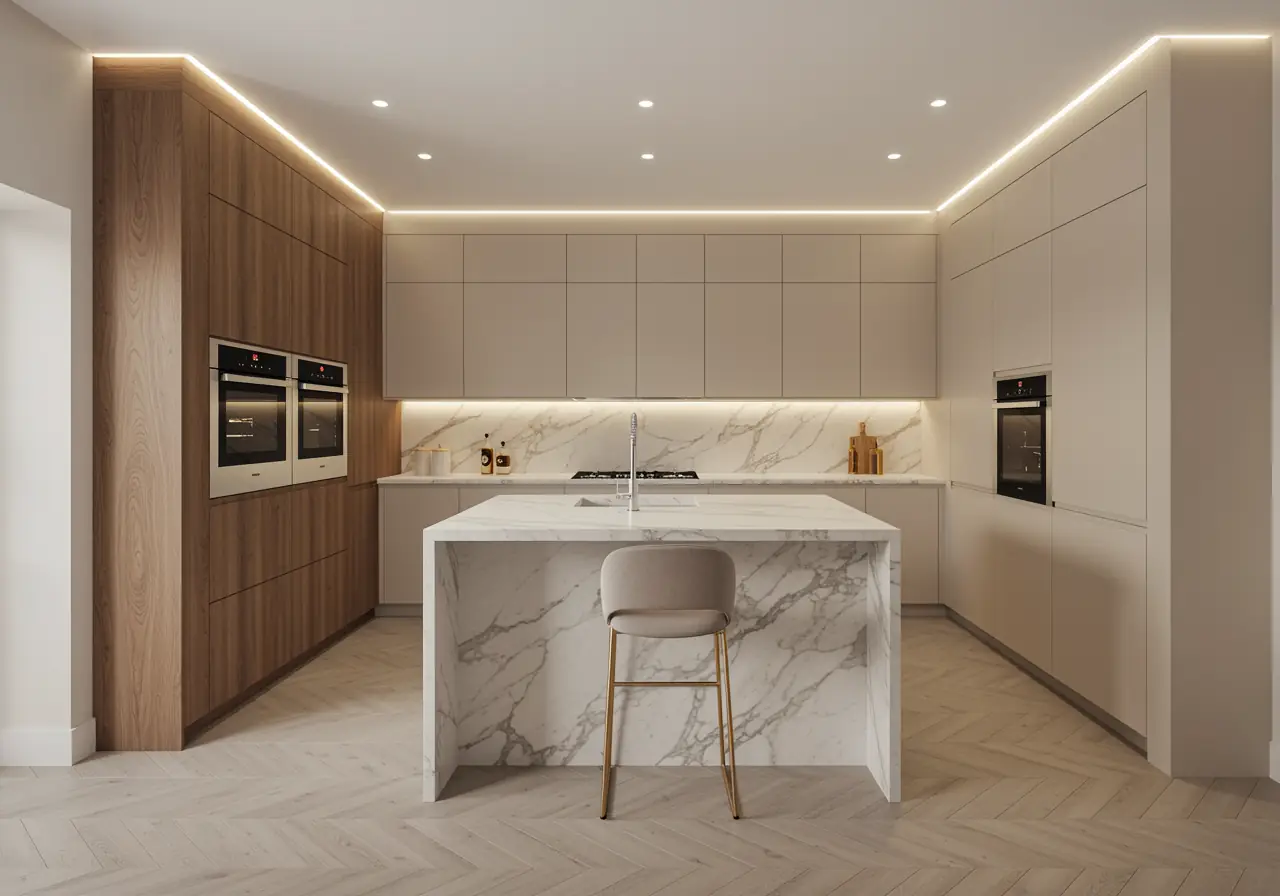Hidden Doors & Secret Rooms: Manhattan Luxury Trends
Manhattan's most discerning homeowners are rediscovering an architectural element that seamlessly blends Old World intrigue with cutting-edge security: hidden doors Manhattan properties now feature as essential luxury amenities. What was once relegated to spy thrillers and historic estates has evolved into a sophisticated design solution that addresses privacy, security, and the desire for truly personalized living spaces. At KS Renovation Group, we've witnessed this transformation firsthand - crafting concealed passages, secure panic rooms, and architectural marvels that elevate Manhattan residences into extraordinary sanctuaries.
The resurgence of hidden doors in Manhattan luxury homes reflects a broader shift in how high-net-worth individuals approach residential design. Beyond mere aesthetics, today's secret rooms serve multiple critical functions: safeguarding valuables, creating secure retreats during emergencies, housing entertainment systems without visual clutter, and maximizing precious square footage in ways that surprise and delight. With our in-house millwork facility in Long Island City and over a decade of experience delivering exceptional Manhattan renovations, KS Renovation Group stands uniquely positioned to transform your vision of concealed elegance into reality.
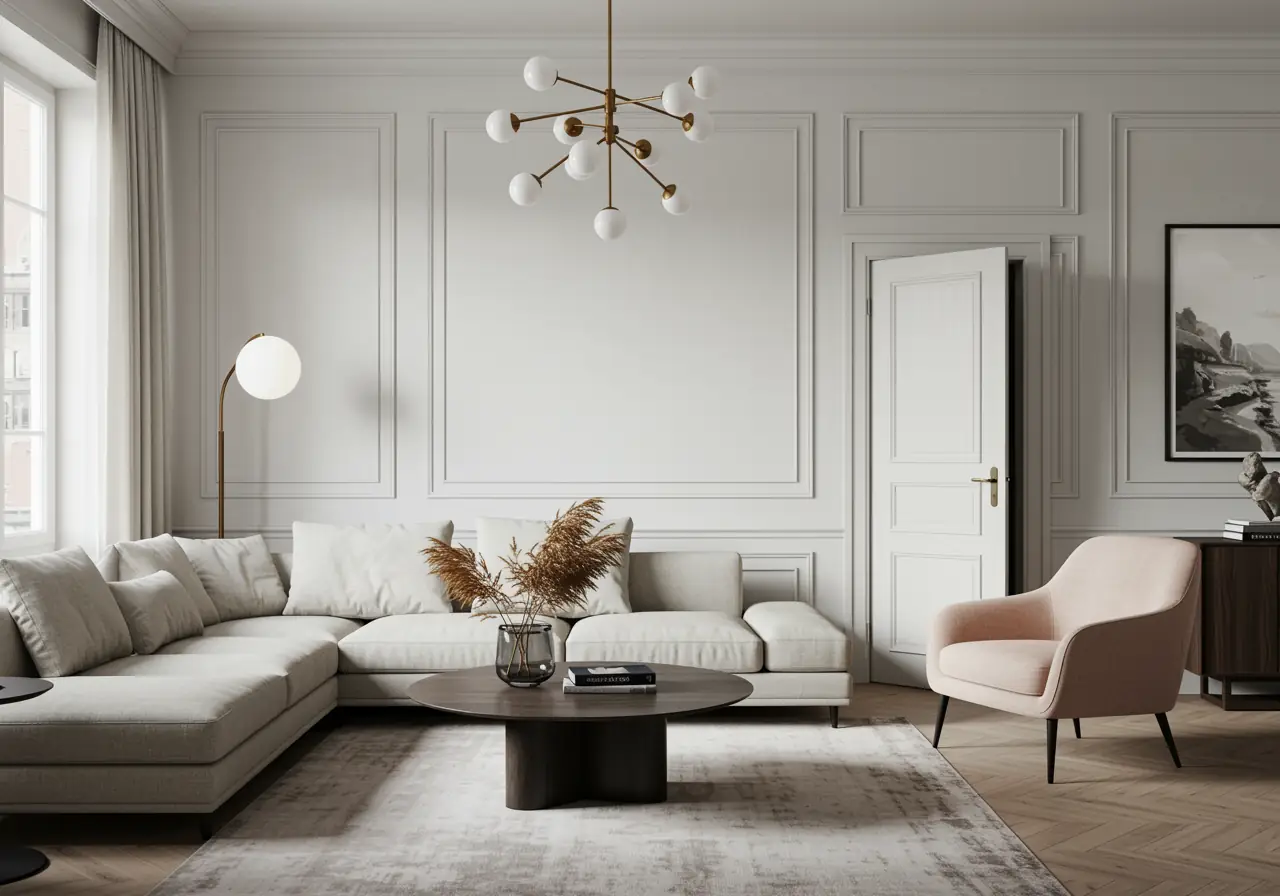
The Security Imperative: Panic Rooms and Protected Spaces in Manhattan
The primary driver behind the hidden door Manhattan trend isn't whimsy - it's security. Manhattan's luxury real estate market has experienced unprecedented growth, with properties in the $10 million-plus category seeing significant increases in both value and vulnerability. High-net-worth homeowners increasingly recognize that traditional security measures, while necessary, aren't always sufficient. A concealed safe room provides the ultimate fallback position - a fortified space where families can shelter during home invasions, civil unrest, or other emergencies.

Modern Panic Room Design and Concealment
Modern panic rooms in Manhattan bear little resemblance to their claustrophobic predecessors. Today's secure spaces integrate seamlessly into residential architecture, accessible through hidden doors disguised as bookcases, mirror panels, closet systems, or even artwork. The entrance mechanism becomes the critical design element - it must remain completely undetectable to intruders while providing instantaneous access to authorized family members.
The sophistication of contemporary concealment techniques allows panic rooms to hide in plain sight. A full-height mirror in a master bedroom closet might swing open to reveal a secure sanctuary. A section of wood-paneled library wall - complete with actual books and decorative objects - could pivot aside. Even kitchen cabinetry can conceal entrances to underground safe rooms, with cabinet doors serving as the access point.
Biometric Access Control and Smart Security Integration
Biometric security systems have revolutionized panic room access. Fingerprint scanners, retina recognition, and facial identification technology ensure that only designated individuals can enter, eliminating concerns about lost keys or forgotten codes. These systems integrate directly into the hidden door mechanism - a discreet touch panel might be concealed within seemingly ordinary wall trim, or voice recognition could trigger the electromagnetic lock release.
Advanced systems now incorporate smartphone integration, allowing homeowners to monitor access remotely and receive instant alerts if unauthorized entry attempts occur. Multiple authentication methods can be layered for enhanced security - requiring both biometric verification and PIN code entry for maximum protection. Family members can have individualized access permissions, with detailed logs recording every entry and exit.

Fortified Construction and Life-Safety Systems
Inside these protected sanctuaries, reinforced construction provides genuine security. Ballistic-rated walls incorporating steel, Kevlar, or composite materials can withstand forced entry attempts. Communication systems maintain contact with emergency services and building security. Climate control, water supplies, and backup power ensure occupants can remain safely secured for extended periods. Yet from the exterior, nothing betrays the room's existence - the hidden door maintains perfect visual continuity with surrounding walls.
Contemporary panic rooms often include dedicated telecommunications infrastructure with multiple redundant systems - landlines, cellular boosters, satellite phones, and internet connectivity. Security camera feeds provide real-time views of the entire residence. Medical supplies, emergency food provisions, and even basic sanitation facilities ensure occupants can shelter comfortably during extended emergencies.
KS Renovation Group's Integrated Security Approach
KS Renovation Group approaches panic room design with meticulous attention to both security functionality and architectural integration. Our millwork artisans craft hidden doors that achieve flawless alignment with existing finishes - matching wood grain patterns, paint textures, and decorative elements so precisely that even close inspection reveals nothing unusual. This seamless integration proves crucial: the effectiveness of any secure room depends entirely on its remaining undetected.
We collaborate with security consultants and threat assessment specialists to design protection appropriate to your specific circumstances. Whether you require basic secure storage for valuables or comprehensive safe room construction meeting military-grade specifications, our team delivers solutions that integrate perfectly with your Manhattan residence's architecture and aesthetic character.
Pivot Doors and Jib Doors: Sophisticated Mechanisms for Seamless Concealment
The engineering behind hidden doors Manhattan installations requires sophisticated mechanical systems that deliver both reliability and invisibility. Two primary technologies dominate luxury applications: pivot door systems and jib door mechanisms, each offering distinct advantages for different architectural scenarios.

Pivot Door Systems: Engineering Excellence for Dramatic Entrances
Pivot doors revolutionize hidden door functionality through their unique rotation mechanism. Unlike traditional side-hinged doors, pivot systems rotate on a vertical axis positioned at top and bottom mounting points - typically offset from the door's edge. This configuration distributes weight more efficiently, enabling considerably larger and heavier door panels than conventional hinges could support. For Manhattan luxury homes, this translates into dramatic floor-to-ceiling hidden passages that can span entire wall sections.
The FritsJurgens System M+ represents the gold standard in pivot door hardware, engineered in Germany to aerospace-grade precision. This completely concealed mechanism embeds entirely within the door and frame structure, leaving zero visible hardware. Homeowners adjust opening speed, dampening characteristics, and latching force through accessible control points - customizing the door's behavior to specific needs. The soft-close technology prevents slamming while electromagnetic locks ensure secure closure when needed. These systems undergo rigorous testing, certified for over 136 years of daily operation without mechanical degradation.
Pivot hidden doors excel in applications requiring substantial concealment. Consider a home library where an entire bookcase wall section - complete with actual functioning shelves filled with books - pivots smoothly aside to reveal a hidden office or wine cellar. The pivot mechanism's strength permits this dramatic effect while maintaining perfect balance and effortless operation. A gentle push in the correct location triggers the opening sequence, and the multi-ton assembly glides open as if weightless.
Jib Doors: The Art of Invisible Architecture

Jib doors represent the ultimate achievement in architectural camouflage. Also termed invisible doors or flush doors, these concealed passages integrate so completely with surrounding walls that their existence remains virtually undetectable. The door surface receives the exact same finish treatment as adjacent wall areas - matching paint, wallpaper, paneling, or decorative moldings. Vertical seams align precisely with wall joints or architectural features, while concealed European-style hinges or pivot mechanisms eliminate any protruding hardware.
Creating effective jib doors demands extraordinary precision. The door must maintain perfect planar alignment with the wall - any warping, twisting, or sagging immediately betrays its presence. This requires exceptionally stable core construction, often utilizing advanced composite materials or engineered wood products that resist dimensional change despite humidity fluctuations and temperature variations. At KS Renovation Group, our millwork facility produces custom jib door cores with internal reinforcement systems that guarantee long-term stability, ensuring your hidden door remains invisible for decades.
Advanced Locking Mechanisms and Access Control
The locking mechanisms for jib doors present particular design challenges. Traditional doorknobs or visible latches obviously destroy the concealment effect. Instead, designers employ touch-sensitive release panels concealed within decorative elements, magnetic catches activated by hidden switches, or even RFID proximity sensors that unlock as authorized users approach. Some luxury installations incorporate smartphone-controlled electric strikes, permitting remote operation via home automation systems.
Multi-point locking systems provide security for these concealed entrances. Rather than a single deadbolt, multiple locking points engage simultaneously along the door's perimeter when secured, creating an essentially impenetrable barrier. This proves critical for panic room applications where forced entry prevention determines the system's entire purpose.
Modern electromagnetic locking systems offer silent operation and incredible holding force - often exceeding 1,200 pounds of resistance. These locks integrate seamlessly with building automation systems, allowing centralized control alongside other security features. Battery backup ensures continued operation during power outages, while manual override mechanisms provide fail-safe egress capability.
Building Code Compliance: Egress Requirements and Safety Standards
While the romantic appeal of secret rooms captivates homeowners, Manhattan building codes impose strict requirements ensuring occupant safety. Any concealed space - particularly those intended for occupancy - must comply with egress regulations governing emergency exit access. Understanding these requirements proves essential for creating both legally compliant and genuinely functional hidden spaces.
NYC Building Code Requirements for Concealed Spaces
New York City Building Code mandates that bedrooms and habitable spaces provide clear egress paths to building exits. This presents obvious challenges for panic rooms accessed exclusively through hidden doors - emergency responders must be able to enter these spaces, and occupants must have alternative exit routes if the primary entrance becomes blocked. Professional design therefore incorporates multiple considerations.
Chapter 10 of the NYC Building Code specifically addresses means of egress, requiring minimum corridor widths, door sizes, and unobstructed pathways. For hidden doors serving as primary egress routes, these dimensions cannot be compromised - a concealed bookcase door must still provide the required clear opening width when fully opened. Door swing direction also matters: egress doors typically must swing in the direction of exit travel, though exceptions exist for smaller occupancy scenarios.
Secondary Egress and Emergency Access Solutions
Secondary egress points provide code-required emergency exits. A panic room might feature a concealed second door leading to a different area of the residence, or a window meeting minimum size requirements for emergency escape. These secondary exits can themselves be hidden but must remain accessible to occupants and identifiable to emergency personnel once they've entered the secured space.
Window egress requirements specify minimum clear opening dimensions - typically 5.7 square feet of opening area, with no dimension less than 20 inches wide and 24 inches high. The window sill cannot exceed 44 inches above the finished floor. For Manhattan high-rise buildings, window egress may not be feasible, necessitating alternative secondary door solutions that lead to fire-protected corridors or stairwells.
Emergency release mechanisms ensure hidden doors can be opened from inside under all circumstances. Even if external power fails or electronic locks malfunction, manual override systems permit egress. These often take the form of clearly marked interior handles or release bars that mechanical linkages connect directly to the locking mechanism, requiring no electrical power to operate.
Fire Safety Standards and Material Requirements
Fire safety considerations influence material selection and construction methods. Hidden doors must achieve specified fire resistance ratings, particularly when they form part of required egress paths. This affects both the door core materials and the surrounding frame construction. Fire-rated hardware, smoke seals, and automatic door release systems that activate during fire alarm events may all be mandated depending on the specific application and building occupancy classification.
Fire-rated doors receive classifications based on hourly ratings - 20-minute, 45-minute, 60-minute, or 90-minute ratings indicate how long the door assembly can withstand standard fire exposure while maintaining its integrity. For hidden doors in residential applications, 20-minute ratings typically suffice, though higher ratings may be required in certain circumstances. The entire door assembly - core, frame, hardware, and seals - must be tested and certified together.
Smoke and draft seals become particularly important for concealed doors. Intumescent seals expand when exposed to heat, filling gaps and preventing smoke infiltration. These seals must be positioned carefully to activate properly while still permitting the door's concealment mechanism to function normally.
Professional Permitting and Certificate of Occupancy Protection
Working with experienced general contractors like KS Renovation Group ensures these complex regulatory requirements receive proper attention. Our team maintains current knowledge of NYC Department of Buildings regulations and coordinates all necessary permits, inspections, and approvals. We collaborate with architects and engineers to develop concealed door systems that achieve your security and aesthetic goals while maintaining full code compliance.
Certificate of Occupancy protection represents another critical consideration. Unpermitted alterations to Manhattan residences can jeopardize your CO, creating serious complications for future property sales or refinancing. Our comprehensive approach includes proper documentation of all construction work, ensuring your hidden door installation enhances property value rather than creating legal liabilities.
The DOB review process for concealed spaces involves submitting detailed architectural plans showing door locations, egress paths, and fire separation details. Structural calculations may be required if door installations affect load-bearing walls or require significant reinforcement. Our project management team handles all documentation, responds to examiner comments, and schedules required inspections - ensuring smooth approval without delays or complications.
Custom Design and Seamless Integration: The KS Renovation Group Advantage
Creating truly exceptional hidden doors Manhattan residents will cherish for decades demands more than mechanical engineering - it requires artisanal craftsmanship united with architectural vision. KS Renovation Group's comprehensive capabilities, from concept design through final installation, ensure every concealed passage exceeds expectations in both functionality and aesthetic refinement.
Tailored Concept Design and Client Collaboration
Our integrated design-build approach begins with understanding your specific needs and aspirations. Perhaps you envision a hidden wine cellar accessed through your dining room paneling, or a secure home office concealed behind bedroom closet cabinetry. Maybe you require a proper panic room meeting full security specifications, or simply want to maximize space efficiency by concealing unsightly utility areas. Whatever your objective, our design team develops custom solutions tailored precisely to your property's architecture and your family's requirements.
The concept design phase involves detailed site assessment, measuring existing conditions with laser precision, and analyzing structural capabilities. We evaluate wall thickness, locate concealed building systems (plumbing, electrical, HVAC), and identify optimal locations for hidden door installations. 3D modeling and photorealistic renderings help visualize proposed solutions before construction begins, ensuring complete alignment with your expectations.
Client collaboration remains central throughout the design process. We present multiple approaches for your consideration, explaining the advantages and trade-offs of each option. Regular design review meetings keep you informed and engaged, allowing refinements and adjustments as your vision evolves.
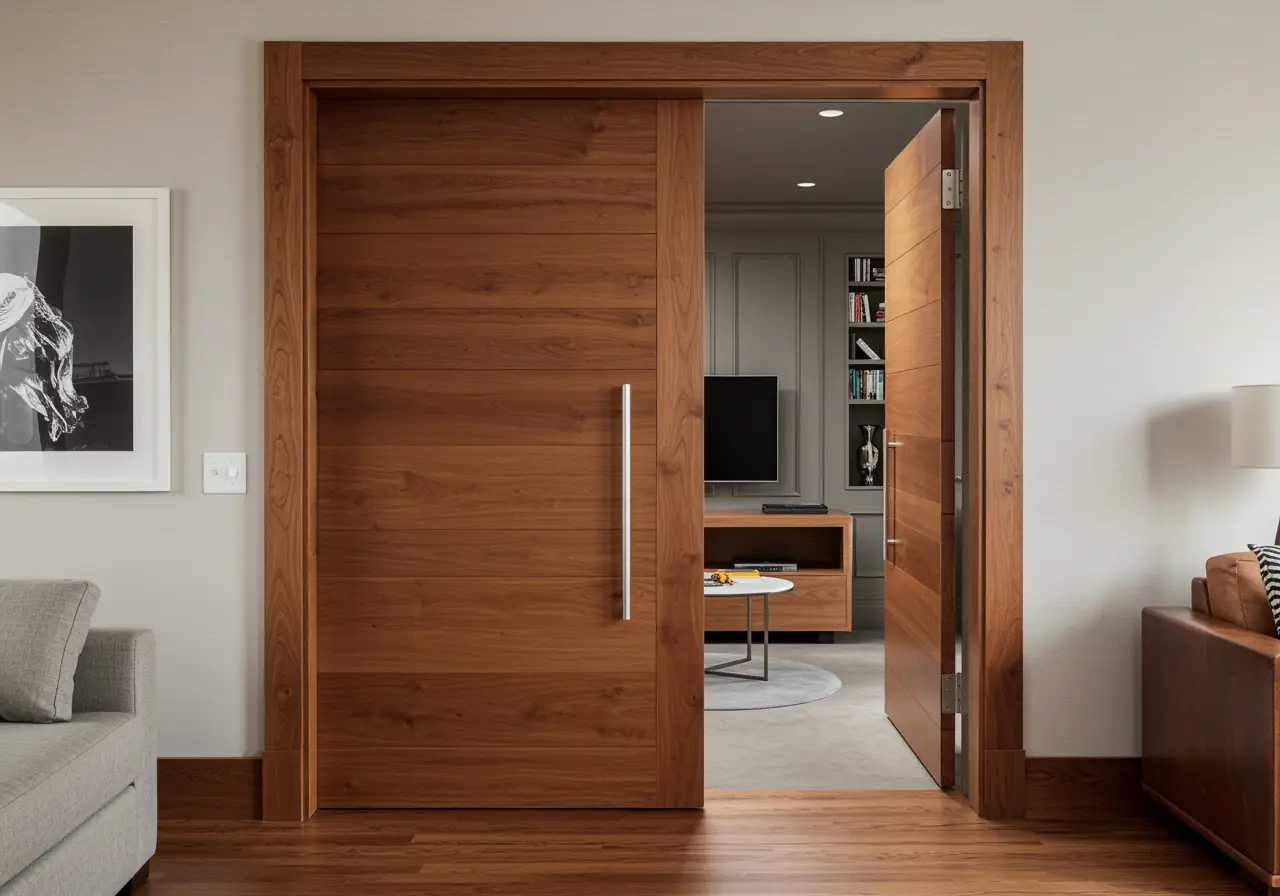
In-House Millwork Production Excellence
Custom millwork production forms the foundation of superior hidden door systems. Operating our own 10,000+ square-foot millwork facility in Long Island City provides KS Renovation Group decisive advantages over general contractors relying on external suppliers. Our master craftsmen control every aspect of door fabrication - selecting premium lumber, engineering stable core structures, executing precision joinery, and applying flawless finishes that match your home's existing millwork character.
This in-house production capability accelerates project timelines while ensuring quality control. Rather than waiting weeks for third-party vendors to deliver components of uncertain quality, we manufacture custom hidden doors on our own schedule, adjusting designs in real-time as installation realities evolve. Discovered an unexpected structural beam that conflicts with your planned doorway? Our team modifies the design immediately, reconfiguring dimensions and pivot locations to accommodate the actual conditions.
Our millwork facility combines state-of-the-art CNC machinery with traditional hand-tool craftsmanship. Computer-controlled routers and panel saws ensure dimensional precision and consistency, while skilled artisans perform detailed fitting, sanding, and finishing work that machines cannot replicate. This fusion of technology and tradition produces hidden doors of exceptional quality and longevity.
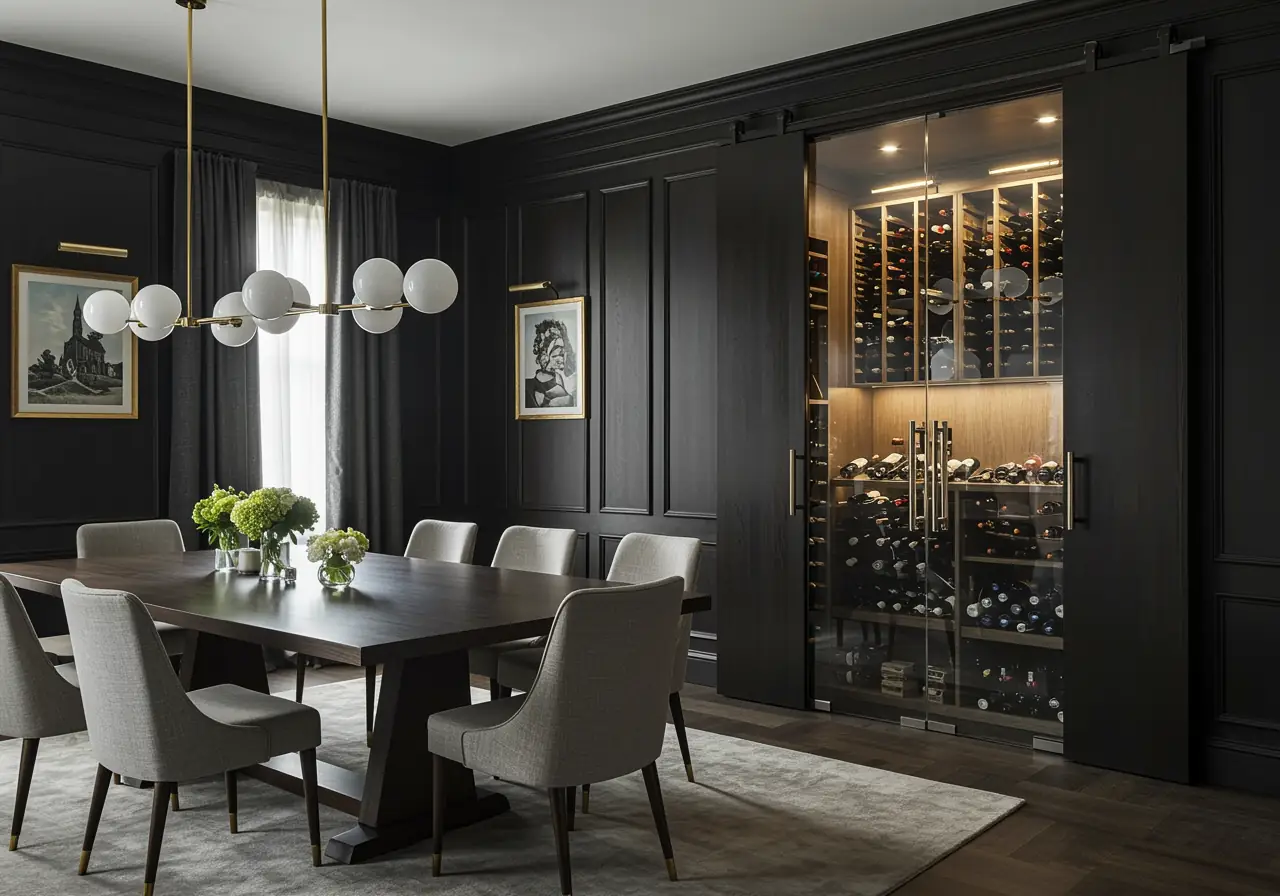
Premium Materials and Finish Matching Expertise
Material selection significantly impacts hidden door performance and longevity. We work with an extensive palette of premium hardwoods - white oak, walnut, mahogany, cherry - along with exotic species for distinctive character. Each timber choice brings specific structural properties, grain patterns, and finishing characteristics. Our millwork specialists guide material selection based on your aesthetic preferences and the technical demands of the application, ensuring the completed door delivers both visual beauty and mechanical reliability.
Finish matching represents perhaps the most critical craftsmanship challenge in hidden door construction. The concealed entrance must disappear completely into its surroundings - any discontinuity in wood grain, paint texture, or decorative detail immediately reveals the door's presence. Our finishing artisans achieve this through meticulous preparation and expert technique, whether matching existing natural wood finishes, coordinating painted surfaces with precise color formulation, or replicating complex decorative treatments.
For painted finishes, we analyze existing surfaces under various lighting conditions, create custom color matches using spectrophotometric analysis, and test samples in situ before final application. Wood staining requires careful attention to species characteristics, grain orientation, and absorption rates. Our finishers may apply multiple coats with intermediate sanding, gradually building color depth and achieving seamless continuity with surrounding millwork.
Comprehensive Project Management and Quality Assurance
Project management excellence distinguishes KS Renovation Group throughout the construction process. Hidden door installation typically forms part of larger renovation scopes - kitchen remodels, bathroom updates, whole-apartment reconstructions. Our comprehensive approach coordinates all trades, maintains clean and organized job sites, communicates proactively about progress and challenges, and delivers completed projects on schedule and within budget. With direct owner involvement in every project, you receive the responsive attention and quality commitment that define our boutique firm approach.
Quality assurance checkpoints occur at every project phase - design approval, material selection confirmation, millwork fabrication inspection, pre-installation dry-fit testing, and final installation verification. We document each milestone with detailed photography and maintain comprehensive project records. Our warranty coverage provides long-term peace of mind, and our ongoing client relationships ensure responsive support whenever needed.
Conclusion
The renaissance of hidden doors Manhattan luxury homes now embrace represents far more than architectural novelty - it reflects evolving priorities around security, privacy, and personalized living environments. As Manhattan's ultra-luxury real estate market continues setting records, discerning homeowners increasingly recognize that true distinction lies not in ostentatious display but in sophisticated details that elevate daily life while providing genuine security.
Whether you're planning a complete apartment reconstruction, contemplating a master suite renovation, or simply intrigued by the possibilities concealed passages offer, KS Renovation Group delivers the expertise, craftsmanship, and commitment necessary to transform your vision into reality. Our decade-plus track record of exceptional Manhattan projects, combined with our unique in-house millwork capabilities, positions us to create hidden doors and secret rooms that exceed even the most demanding expectations.
The time has come to reimagine what your Manhattan residence can be. Contact KS Renovation Group today to schedule your complimentary consultation and discover how custom millwork excellence can create the secure, sophisticated, and utterly unique spaces you've been dreaming about.
Ready to create your own secret sanctuary? Book your free consultation with KS Renovation Group today and explore the possibilities of custom hidden doors, secure panic rooms, and architectural concealment that will transform your Manhattan home into an extraordinary private retreat.
Frequently Asked Questions
Q: Can hidden doors be added to existing Manhattan apartments without major renovation?
A: Absolutely. While large-scale reconstructions offer maximum flexibility, we frequently install hidden doors as standalone improvements in existing residences. The key considerations include available wall depth for door mechanisms, structural support capacity, and finish matching with current millwork. Our design team evaluates your specific situation and proposes solutions that minimize disruption while achieving your concealment objectives.
Q: Do hidden doors and panic rooms comply with NYC building codes?
A: Yes, when properly designed and permitted. KS Renovation Group ensures all hidden door installations meet NYC Department of Buildings requirements, including egress regulations, fire safety standards, and structural code compliance. We handle all permitting processes and coordinate required inspections, protecting your Certificate of Occupancy and property value.
Q: What's the difference between pivot doors and jib doors for hidden applications?
A: Pivot doors rotate on a vertical axis offset from the door edge, enabling larger and heavier installations with dramatic opening effects - ideal for floor-to-ceiling bookcases or full-wall concealment. Jib doors are flush-mounted to appear as continuous wall surfaces with concealed hinges, maximizing invisibility - perfect for seamlessly hidden entrances. Your specific application and aesthetic preferences determine which technology best serves your needs.
Q: How long does hidden door installation take?
A: Timeline depends on project scope and complexity. A single concealed bookcase door might be fabricated and installed within 4-6 weeks, while comprehensive panic room construction with multiple security features could require 8-12 weeks. Our millwork facility's in-house production capability often accelerates timelines compared to contractors relying on external suppliers. We provide detailed scheduling during the design phase and communicate proactively throughout construction.
Q: What maintenance do hidden doors require?
A: Quality hidden door systems require minimal maintenance. Premium pivot mechanisms like the FritsJurgens System M+ operate maintenance-free for decades. We recommend annual inspection of locking mechanisms, lubrication of moving parts, and periodic adjustment of damping controls to maintain optimal performance. Electronic components such as biometric scanners may require battery replacement every 2-3 years. KS Renovation Group provides comprehensive warranty coverage and ongoing support for all installations.
Q: Can existing millwork be converted into hidden doors?
A: Sometimes, depending on the existing installation's structural integrity and configuration. Built-in bookcases, closet systems, and paneling can potentially be retrofitted with concealed pivot or hinge mechanisms. However, ensuring proper weight distribution, installing secure mounting points, and achieving reliable operation often requires significant modification or complete reconstruction. Our team evaluates your existing millwork and recommends the most cost-effective approach - retrofit versus replacement - based on actual conditions and your performance expectations.
Q: What security features should Manhattan panic rooms include?
A: Comprehensive panic room security combines multiple elements: reinforced walls with ballistic-rated materials, multi-point locking systems on hidden door entrances, biometric or keypad access control preventing unauthorized entry, secondary egress routes meeting code requirements, independent communication systems for emergency contact, climate control and air filtration, backup power supplies, and storage for water and emergency supplies. KS Renovation Group consults with security specialists to design systems appropriate to your specific threat assessment and budget parameters.

KS Renovation Blog
Get Inspired
Meaningful information about home remodeling for the true NYC homeowners.
OUr Clients Say
NYC kitchen remodeling Projects and more



